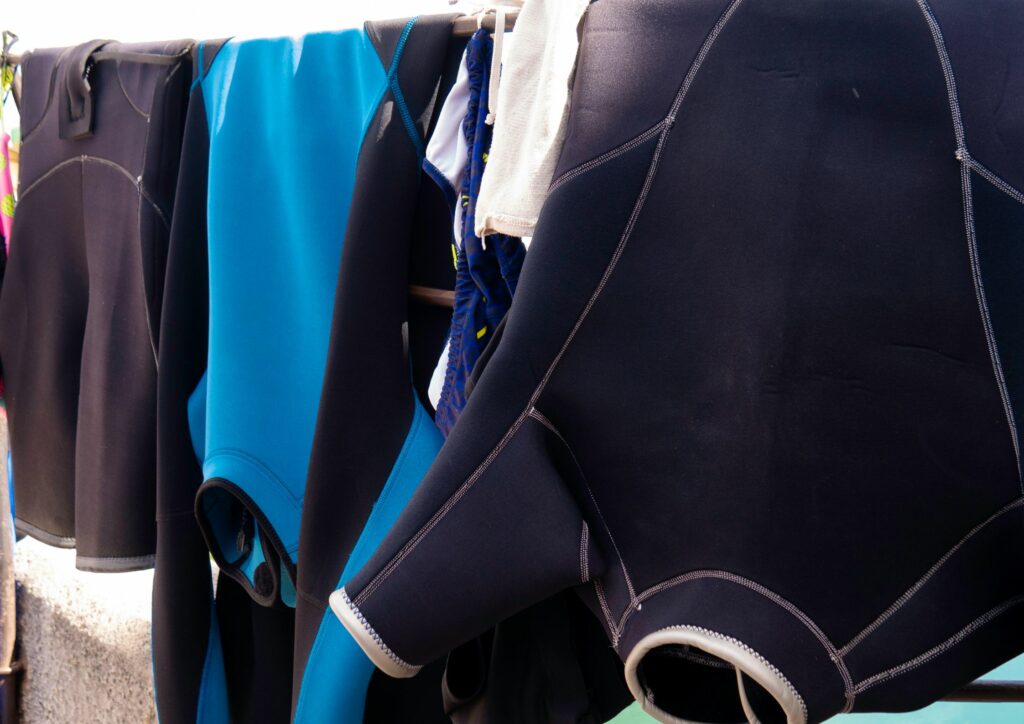One specialized area that offers a unique experience is Dry Suit Diving in the world of underwater adventure, diving is an exhilarating journey that leaves divers desiring to explore more. This blog post aims to unleash the dive master in you by shedding light on essential tips to master this speciality dive, enhancing your underwater comfort and thermal protection during your plunge.
Understanding Dry Suit Diving

Although many divers are acquainted with wet suits, the use of a dry suit introduces a completely different dynamic to diving. Unlike its counterpart, the wet suit, the dry suit is designed to keep you utterly dry even while submerged in water. This impressive feature allows for an enhanced level of thermal protection, which is essential for diving in colder waters.
The dry suit plays a vital role in conservation of body heat and comfort, making the cold water diving experience significantly more bearable. Training on how to use a dry suit is also quite essential. Unlike general scuba diving skills, diving in a dry suit requires tailored workout, the mastering of which leads to a superior, safer, and far more enjoyable diving experience.
Mastering Buoyancy
Being able to control buoyancy in water is a fundamental skill for every diver. This is even more crucial when it comes to dry suit diving which has a unique way of buoyancy regulation involved. The way buoyancy in dry suit diving is handled greatly relies on the inflation and deflation of the suit along with the appropriate weight system. These factors have a significant effect on your control in maintaining depth and setting your ascend and descent rates. Possessing the ability to control these aspects results in superior underwater comfort, essentially making your diving experience more enjoyable and notably memorable.
Embracing the Dive Equipment
A clear understanding and expertise on utilizing your dive equipment can be the determining factor between having a thoroughly enjoyable dive and experiencing a complicated one. It is vital to focus on getting well acquainted with the features and use of your dry suit, its corresponding buoyancy control system and also mastering the operations of the valve. A certain level of familiarity with these components not only guarantees safety but also allows for effortless underwater communication and navigation.
Importance of Pre-Dive Checks
The significance of preparation while diving cannot be underestimated. A pre-dive check acts as a safety layer ensuring that all your equipment is functioning as it should. Besides just checking your general diving gear, an extra level of attention should be dedicated to inspect the dry suit for any potential leaks or any discrepancy in the valve integrity. Proper checks keep you dry and conserve your thermal protection throughout your dive.
Temperature Management
Retaining thermal balance while diving is a crucial aspect. Managing to keep warmth within a cold water environment can be challenging, and understanding how to dress in accordance to the water temperature under your dry suit will considerably assist in keeping this balance. Other often-overlooked factors that contribute to temperature management include regular hydration and maintaining a balanced diet. A proper diet is essential in maintaining general body temperature and reduces the risk of hypothermia when diving in cold water conditions.
Dive Deep and Warm: The Mastery of Dry Suit Diving
Mastering dry suit diving is a rewarding step that opens up doors to explore more diverse underwater environments. Whether it is understanding the dry suit, perfecting buoyancy, recognizing the importance of pre-dive checks, or maintaining thermal balance, each step is an empowerment towards being a competent dry suit diver. Remember, as with any speciality dive, practice and continuous learning under professional guidance is key to enhancing skills and becoming the master diver you wish to be.

I must say, I’m impressed by the level of detail and expertise shared in this blog post. As a beginner in dry suit diving, I found it really helpful to understand the importance of pre-dive checks and temperature management.
Hi Siti Nuraini, thank you for sharing your positive experience with our blog post! We’re thrilled to hear that it was helpful in understanding the importance of pre-dive checks and temperature management. As a beginner in dry suit diving, it’s great that you’re taking the time to learn about this speciality dive. If you have any more questions or concerns, please don’t hesitate to reach out to us at Tel: +65 6734 9373 or Email: [email protected]. We’re here to help and look forward to seeing your progress in dry suit diving!
I completely agree with the author’s emphasis on mastering buoyancy in dry suit diving. It’s indeed a crucial skill to master, especially when you’re new to this type of diving.
Thank you for sharing your thoughts, Koh Wei Liang! We’re glad to hear that you agree on the importance of mastering buoyancy in dry suit diving. At Gill Divers, we believe that practice and continuous learning under professional guidance is key to enhancing skills and becoming a competent dry suit diver. If you have any further questions or concerns, please don’t hesitate to reach out to us at Tel: +65 6734 9373 or Email: [[email protected]](mailto:[email protected]). We’re always here to help.
I loved the way the author broke down each aspect of dry suit diving into manageable chunks. It made it easy to understand and relate to, even for someone who’s new to scuba diving like me.
Thank you, Razak bin Mat, for sharing your thoughts about our blog post on Dry Suit Diving. We’re thrilled to hear that the breakdown of each aspect made it easy to understand and relate to, even for a beginner like yourself! At Gill Divers, we believe that mastering dry suit diving requires not only knowledge but also practice and continuous learning under professional guidance. If you have any more questions or concerns about dry suit diving, please don’t hesitate to reach out to us at Tel: +65 6734 9373 or Email: [email protected].